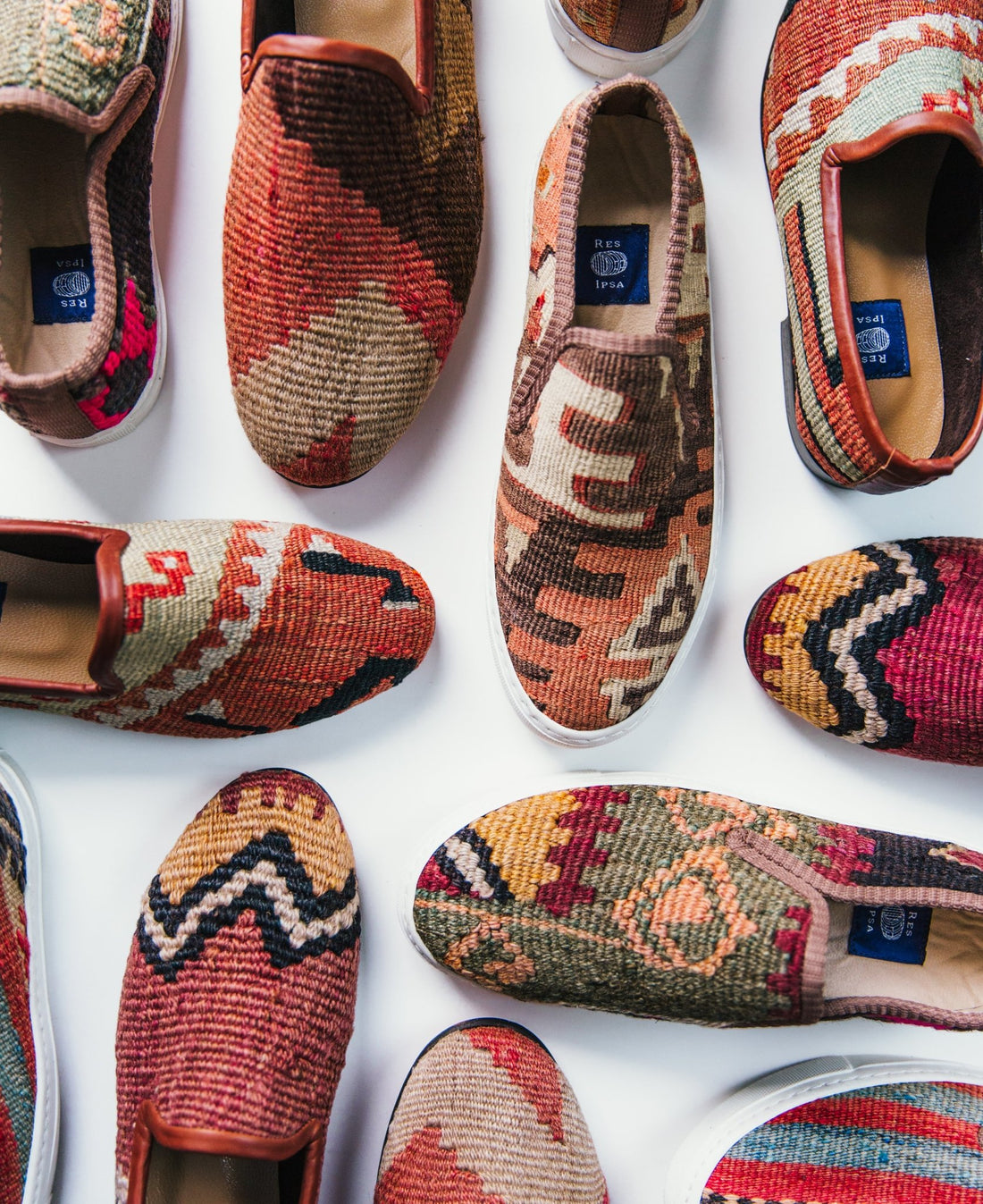Istanbul, Turkey — In 2013 we took a trip to the Middle East. We found delight walking through the Grand Bazaar, Istanbul’s vibrant, historical marketplace. We knew it had a history of travellers and makers, all with their own story. What we didn’t know at the time was that our story was already written there.
We walked into a small store selling antique Turkish kilim rugs and other products. We were intrigued by the bright colors, and shapes in the kilim rugs, but we didn’t know much about the history or qualities of kilim. We introduced ourselves to the young man working at the store and asked him about the beautiful antique kilim rugs that dotted the shop. He explained a few things about the vibrant history of kilim, and we knew we were hooked. A beautiful textile, with an interesting past, who could resist. What we didn’t expect was the strange small-world connection between us and the young shop-owner. As it turns out, the man had just moved home to Istanbul to work in his family business making kilim products. From where had he just moved? Atlanta. Atlanta!? We’re from Atlanta. We were all excited.
At dinner that evening, we thought it must’ve been some sort of destiny. We had traveled all that way and of all stores in Istanbul, we wandered into the store with a young man also from Atlanta. We discussed and decided we would make products for ourselves - a dress slipper (loafer), a kilim dopp kit, and a kilim weekender bag. Soon, we had prototypes and our final designs. Our story was written.
However, the Res Ipsa story is not a new story. Our story is part of a long history of stories that date back thousands of years and many empires. Our story is just a chapter in the history of kilim. We want to answer the essential question: what is kilim, so you’ll understand the importance of the material and its relevance to the Res Ipsa brand.
What is Kilim?
Kilim Definition
- A kilim is a pileless, tapestry-woven rug or other textile with geometric designs in rich, brilliant colors, traditionally made in parts of the Middle East and neighboring regions.
- Kilim has a long history that spans thousands of years and many empires. The method of weaving kilim and it’s intended use have changed with each coming and going of a new empire.

A Brief History of Kilim
- Kilim has been used for a variety of purposes as far back as ancient times. It was often at the center of day-to-day life, as the method of weaving kilim made it highly durable.
- A few traditional uses include:
- To cover and protect mosque and yurt floors
- Kept as a source of pride or an heirloom for many cultures of nomadic people
- Prayer rugs
- Saddle covers
- Wall hangings
- Bags
- Mule shoes
Turkish Kilim
- Turkish kilim is by far the most used and highly regarded method of weaving kilim, which is why it is used in all of our kilim bags, kilim backpacks, kilim shoes, and accessories.
- Kilim originated in the Anatolia area of Turkey. Situated between the Black and Mediterranean seas, Anatolia is often thought of as one of the great crossroads between ancient civilizations.
- Today, many of the shapes and symbols found in Turkish kilim can still be traced to these ancient times.
- The bright colors and diverse designs still found in Turkish kilim can largely be attributed to the region’s colorful and often convoluted past.
Qualities of Turkish Kilim
- Durable
- No pile means that the treads have not been cut and that the fabric is reversible
- Handmade, each is unique
- Traditionally made of wool
Kilim and Res Ipsa
At Res Ipsa all of our kilim products are designed with its history in mind. We wanted to breath a fresh new life into the ancient textile. The merging of Eastern and Western cultures has been part of the history of kilim since it’s beginning, as Anatolia (the place of it’s founding) is thought to be the crossroads between East and West. Which is why Res Ipsa products combine the Eastern flavor of bright, bold kilim with classic Western shapes and styles, such as the British loafer.
 Shop Kilim Backpack (handmade in Marrakech)
Shop Kilim Backpack (handmade in Marrakech)
The qualities of kilim that made it so valuable in ancient times is exactly why we use it to make all of our premium handmade travel leisure goods. The long history of kilim proves its ability to retain a sense of timeless allure, and like everything at Res Ipsa, it is self-evidently stylish.
In Arabic and in the Alchemist, “maktub” means “written” or “this is fate.” Our story was written that day in Istanbul. Our story was written with kilim.
---
#ResIpsa
#OurBrandisTravel






